Berman Park Exemplifies City’s Efforts to Connect Greenways, Protect Environment

Just a few blocks from the Founders Row II Development on West Broad Street, and right behind the Fields of Falls Church affordable housing units, hides Berman Park, one of the City’s secluded park gems and a model eco-friendly corridor between 229 Kent St. and 234 Irving St.
The Berman Park Trail Improvement Project
As part of the City’s 2015 “Parks for People” Plan to connect “green corridors” throughout the City, the Berman Park Trail Improvement Project has been green-lighted with the goal of improving “safety for pedestrians and bicyclists using the trail,” by “updat[ing] four of the trail’s street crossings, specifically at Ellison Street, Kent Street, Irving Street, and South Spring Street,” according to the City’s website. “The new crossings will include high visibility markings to highlight the trail crossings and narrowed street cross-sections to shorten the pedestrian crossing distance.”
According to the project website, Berman Park “connects commercial properties and residential areas (single-family and multi-family) and is part of the City’s network of green spaces.” Enhancing the block-by-block connections to and within the city park will help solve the problem of having a walking and biking trail that “traverses the entire park,” but is “split by several street crossings, which lack adequate pedestrian facilities and signage.”
The City’s “Parks and People Plan
The vision of the City’s “Parks and People Plan” is to “Build upon existing parks within the City to develop a well-maintained, safe, and connected park, open space, and recreation system that provides a range of amenities, enhances natural ecosystems through the use of green infrastructure, and contributes to a sense of place by enhancing and relating to adjacent land uses.”
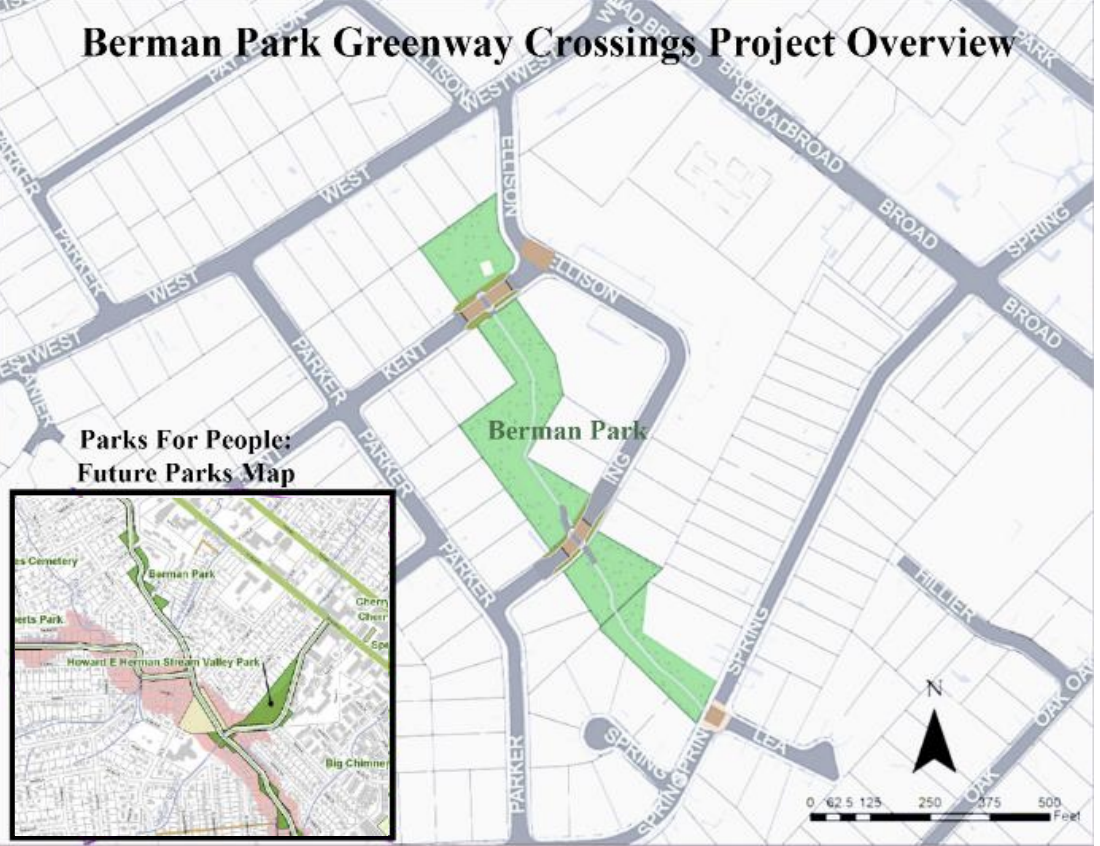
The Falls Church Independent spoke with the Planning Director of the City of Falls Church, Paul Stoddard, and the City’s Construction Project Manager for the Berman Park Trail Improvement Project, Ryan Borugerdi.
We wanted to find out how the project is going and how it fits into the City’s larger city-planning and environmental goals.
A Stroll Through Berman Park
At the Kent Street entrance to the park, a colorful pink Little Free Library awaits and notices are posted highlighting the park as a “wilderness area,” announcing a public forum on updating playground equipment, and on a nearby tree, leading kids on a "T Rex Scavanger Hunt" put on by the Department of Recreation and Parks.
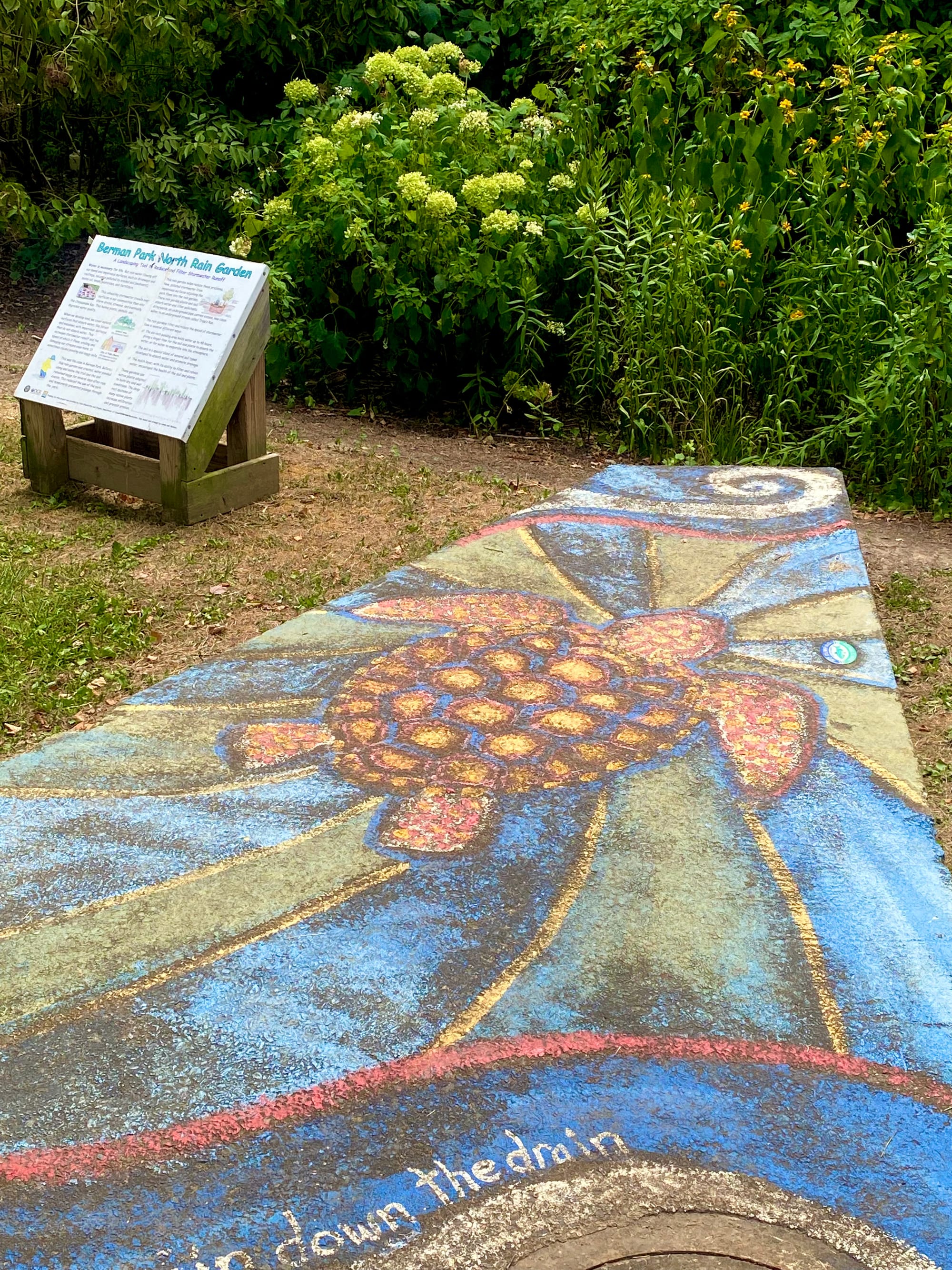
Virginia.org, describes Berman Park as: “a unique facility... a linear park with a trail that’s a link from South Washington Street to West Broad Street. The park is accessible to all the neighbors of the park and is heavily used. The open areas are large enough for small groups to kick a soccer ball around or play a game of catch, making it an ideal place for families and groups of friends to spend time together.” The park is listed as “family friendly,” “pet friendly,” “Virginia Green,” “Eco-Friendly,” “LGBT Friendly,” and “Group Friendly (20 or more people)” and includes a “Pet Rest Area,” “Wheelchair Accessibility,” and Wifi.
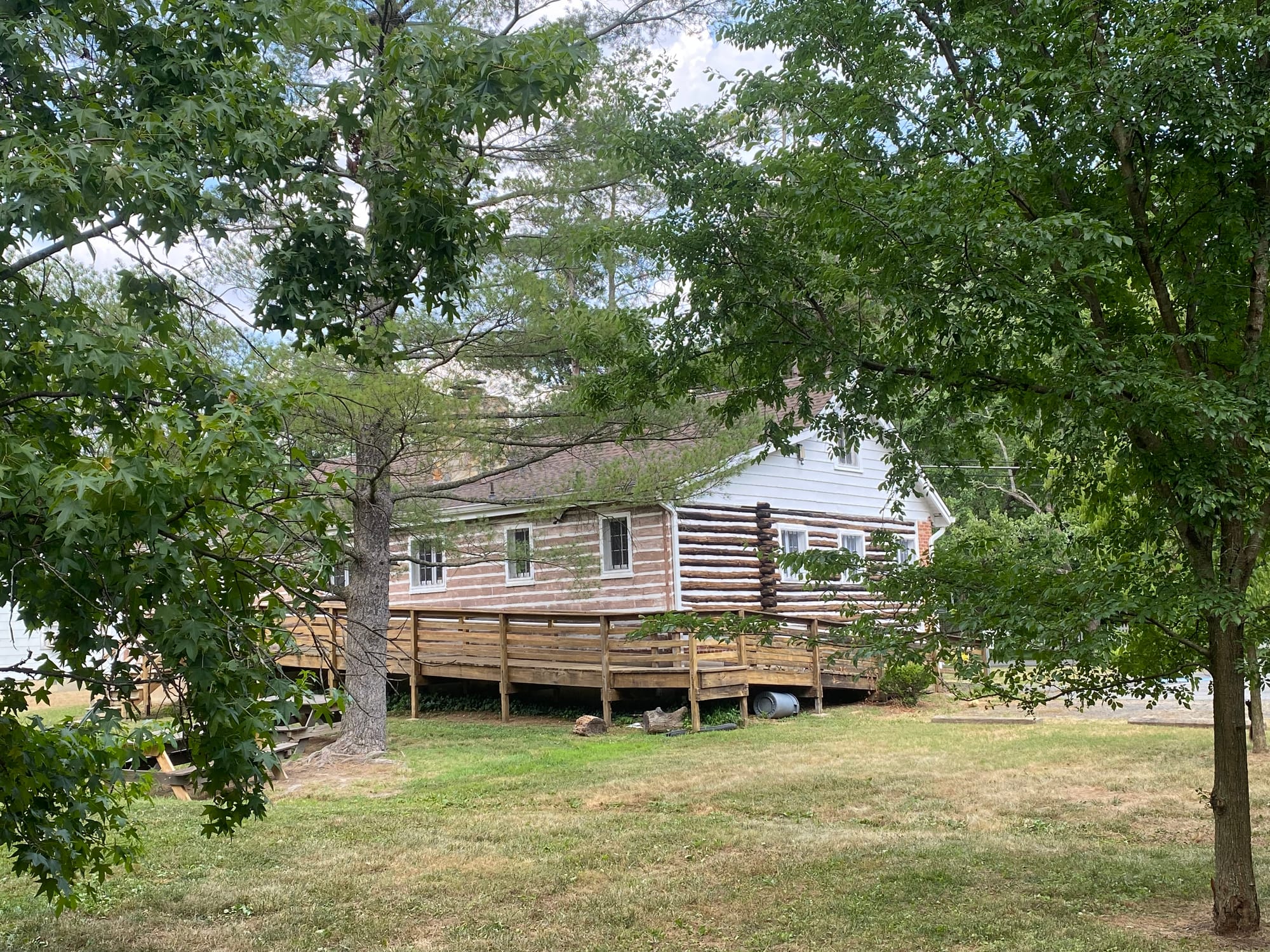
A stroll through the park’s several blocks reveals multiple rain gardens with elevated trails and surrounding wildflowers, educational signage, public art displays, children’s swings, a sandbox, picnic tables, benches, and jungle gyms with a lookout tower. From Berman Park, a walking/bike path through the Scout Building Association’s grounds – where the group’s iconic and mysterious log-cabin structure sits – provides a perfect culmination to the quiet stroll along Tripps Run. A deer is spotted foraging down by the stream.
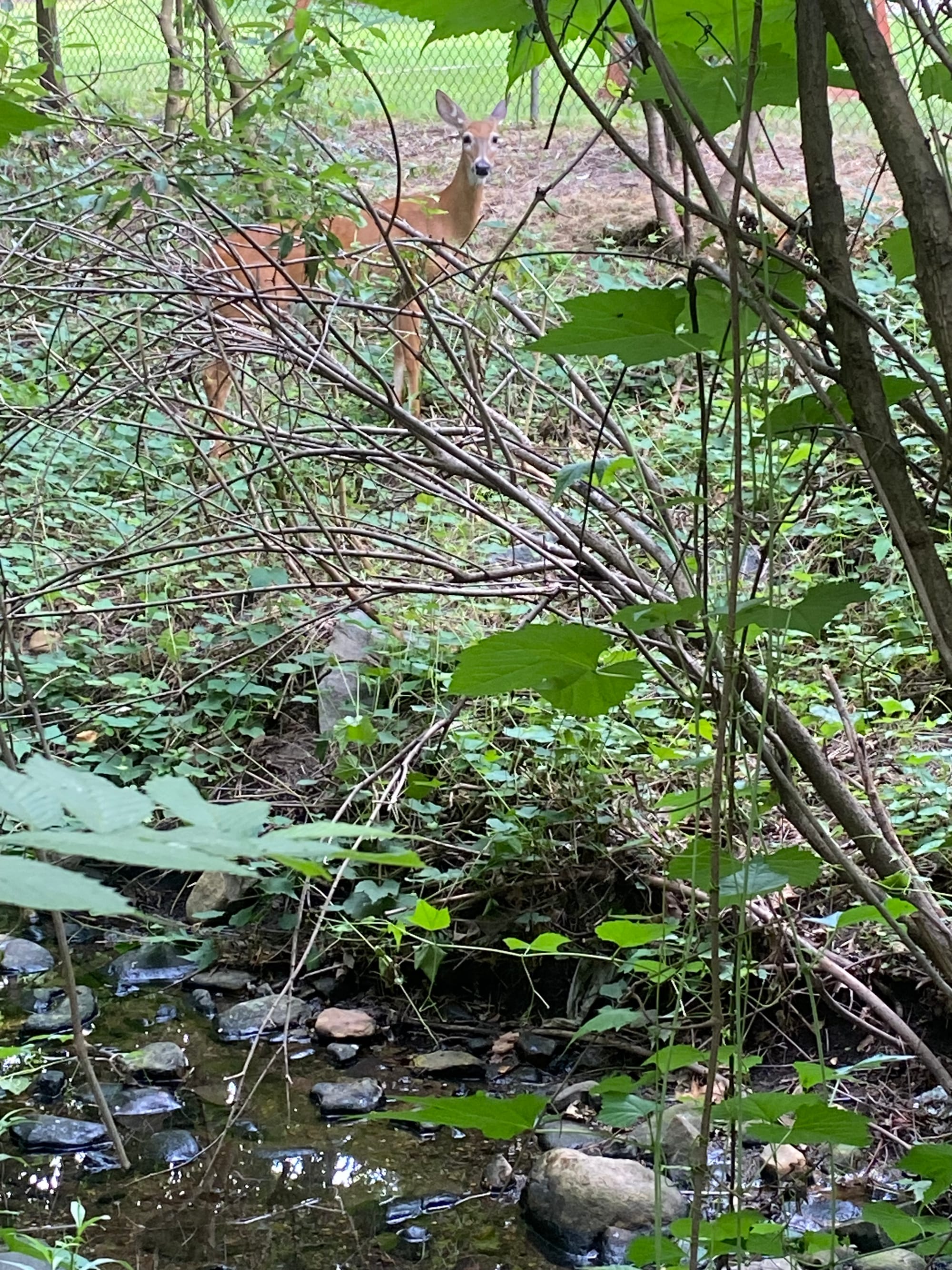
Construction Project Manager Ryan Borugerdi
Construction Project Manager Ryan Borugerdi – a former engineering faculty member of the University of Tehran and 25-year construction project specialist who’s been with the City of Falls Church the last two years, after serving for 7 years in Arlington County – reassures that the project is on schedule. “We are currently evaluating the contractors who've submitted the bids and the contract department of the City of Falls Church is evaluating the bidders to see who are going to be the contractors.”
We asked Borugerdi what he found exciting in the project. “The project will improve six crossings in the Berman Park area, three at Kent and Ellison, one at Irving Street, one at Spring Street, and one at Lee Court,” he said. “And the goal is to improve the safety for the pedestrians and cyclers. So, it’s going to be improved with colored concrete, shortening the crossings, improving the drainage and gutters and the lighting and markings… It was part of the City’s vision from, I think, 2020…. It’s a federally-funded project, so there was a VDOT review and they made a plan to spend the money and make it safer.”
Borugerdi is also completing another “green corridor” project at the W&OD Trail crossing at Great Falls Street. “If you want to take a look, it’s going to be completed in maybe two or three weeks…. It’s been very successful. Hopefully it will give you some idea about what’s going to happen in Berman Park… It will have the same goal, for safety, concrete color, and things like that.”
Director of Planning for the City of Falls Church, Paul Stoddard
The following interview has been edited for length and clarity.

FCI: So, we’re interested in finding out how the rain gardens in Berman Park might be part of the City’s environmental program.
PS: Well, there are a couple of different pieces to all of this. There’s the crossings project…. That’s where we’re actually trying to better connect the park across the street, make it safer for folks who're trying to travel along or through the park, to tighten up the crossings and make the crosswalks more noticeable…. I know our Rec and Parks Department is also looking at upgrading some of the playground equipment, and obviously in doing that they want to be sensitive to the rain gardens in there….
The City's Vision to Connect Green Spaces
FCI: I really like walking through Berman Park as a local and I love seeing the rain gardens there and it’s a nice way of getting into the city and I sometimes make the connection to the Howard E Herman Stream Trail. I know you’re trying to create more connectivity in the city. Is this part of that idea?
PS: Yes, so that’s what got this crossing project going. The City has a Comprehensive Plan and it’s a 25-year road map for physical development of the City and there’s a chapter specifically for parks, and the vision – I think that chapter was maybe updated in 2015-ish – but the underlying vision of that was to actually connect all the City’s green spaces together. Obviously trails and greenways are a way to do that. So this was recognizing that Berman Park is segmented by all these different streets. And really it ought to be one long park experience for everyone.
Rain Gardens
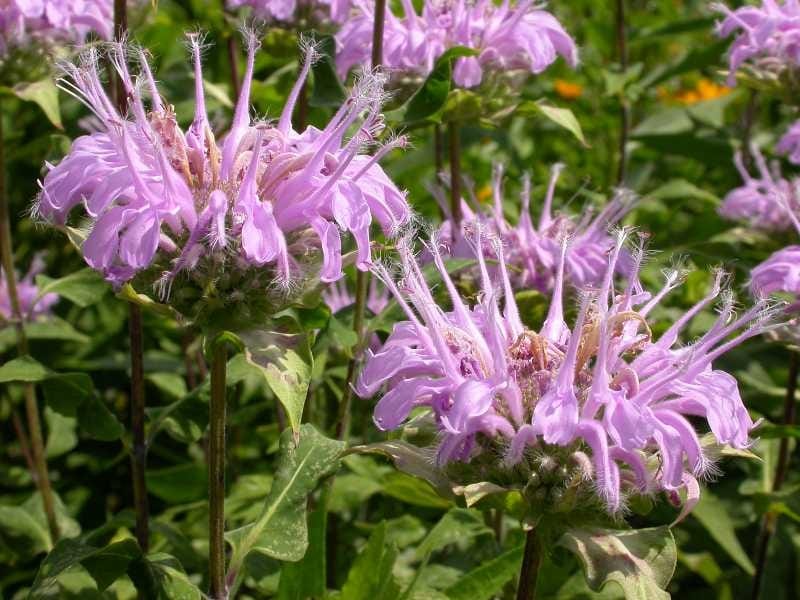
FCI: So, can you talk about the City’s rain gardens and Berman Park?
PS: Yes, City staff have been installing rain gardens throughout the City. And those are done for two purposes. One is to help reduce flooding in the immediate area. And the other is a City-wide effort to get our pollution under control. Any time it rains, that rain water is not just carrying water, it’s carrying phosphorus and nitrogen and other things. So those rain gardens are fulfilling two goals: one, they’re slowing down the flow of the water, and two: they’re filtering out the pollutants. And the pollution controls are all there to support our Chesapeake Bay preservation requirements.
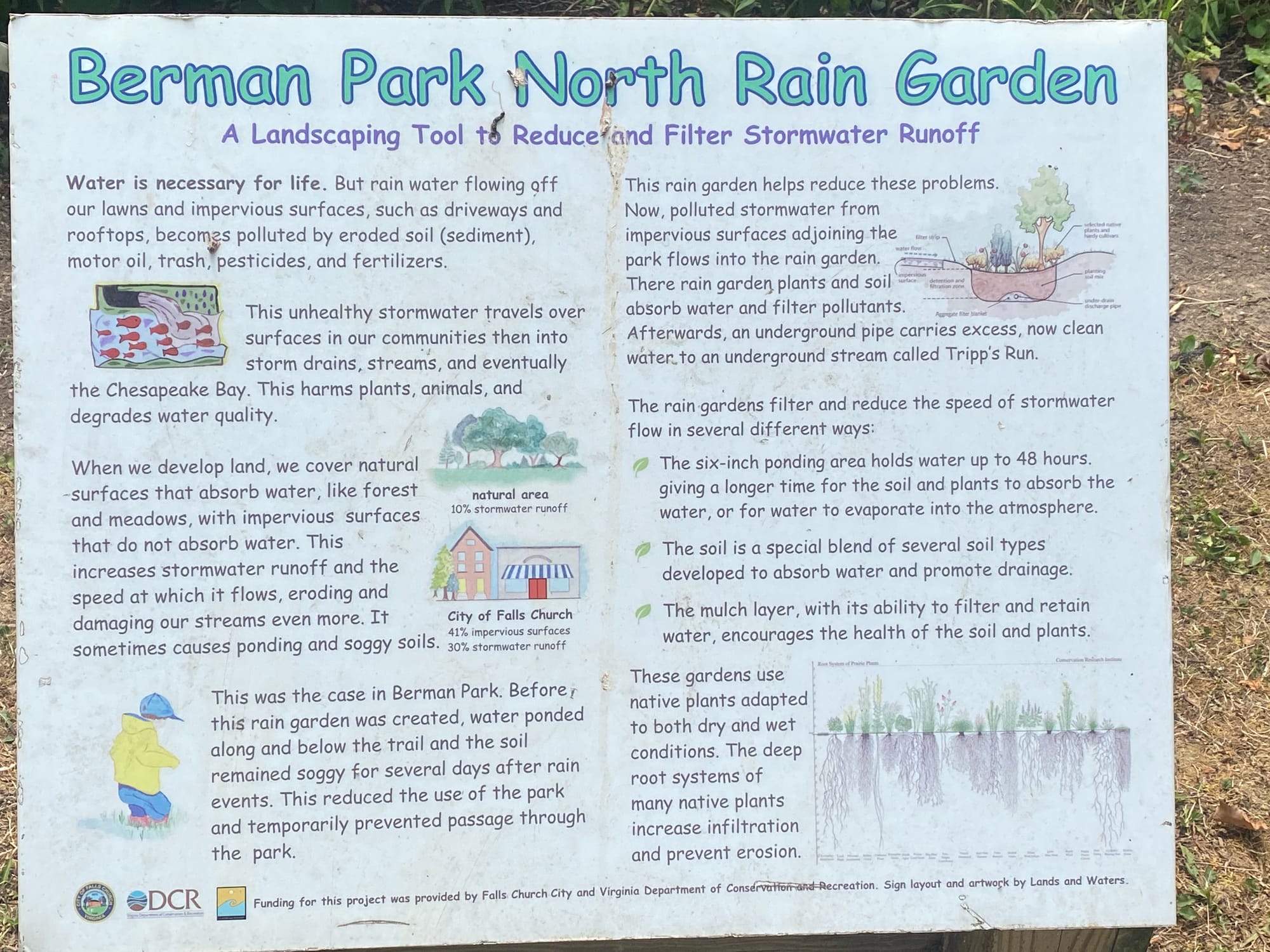
FCI: Nice. And I guess they also provide local gardens to attract pollinators?
PS: Oh, yeah, they also look nice. I think sometimes people undervalue that when we’re planning a project. Just the fact that it looks nice means people can enjoy it.
FCI: But it also has the environmental effect of attracting the pollinators and birds and other species?
PS: Yeah, the shoptalk for that is “co-benefits.” You’re delivering a project that, by the way, is also doing these other things…. At this point, I think rain gardens fall under the umbrella of “green infrastructure.” It’s a pretty standard sort of tool in the kit that places use. And even private landowners will use the same thing, whether it’s a commercial building or residential building, they’ll include some sort of rain garden in their site design.
FCI: And you can also see rain gardens cropping up along median strips.
PS: Yes. So the Planning Commission actually hosted a speaker from Arlington as part of their speaker series to talk about Arlington’s Green Streets program and what they do.... Because a city’s right-of-way is one of those overlooked places that usually accounts for a pretty substantial percentage of a community’s land area. So I think people are learning now that you can actually do a lot in a community’s right-of-way.
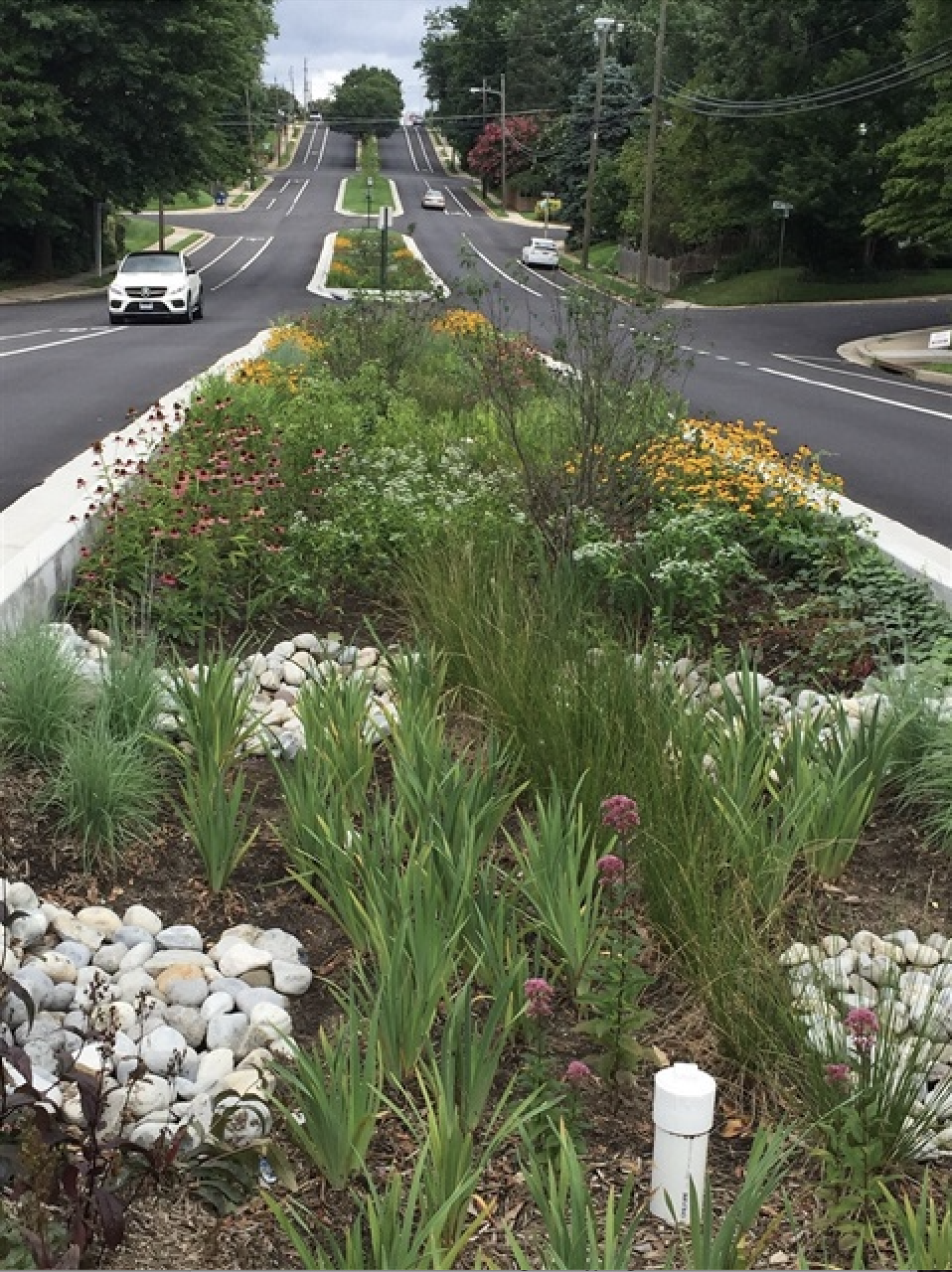
FCI: So there’s a lot of green space that can be managed for the better environmentally?
PS: Yes. For years, the thinking was that the right-of-way is where you put all the pavings and sidewalks and that’s it. But, what you’re now seeing is that, actually, trees and rain gardens and other things can fit alongside those and then you have a more complete and more comfortable street, a safer street, and it’s one that helps alleviate flooding instead of perhaps contributing to flooding.
FCI: So, as the Chief Planner for the City, would rain garden designs fall under your purview?
PS: Well, storm water is handled by the DPW, so the rain gardens that go in are implemented through them. Overall design for the parks is the responsibility for the Parks Department.
Tree Canopy
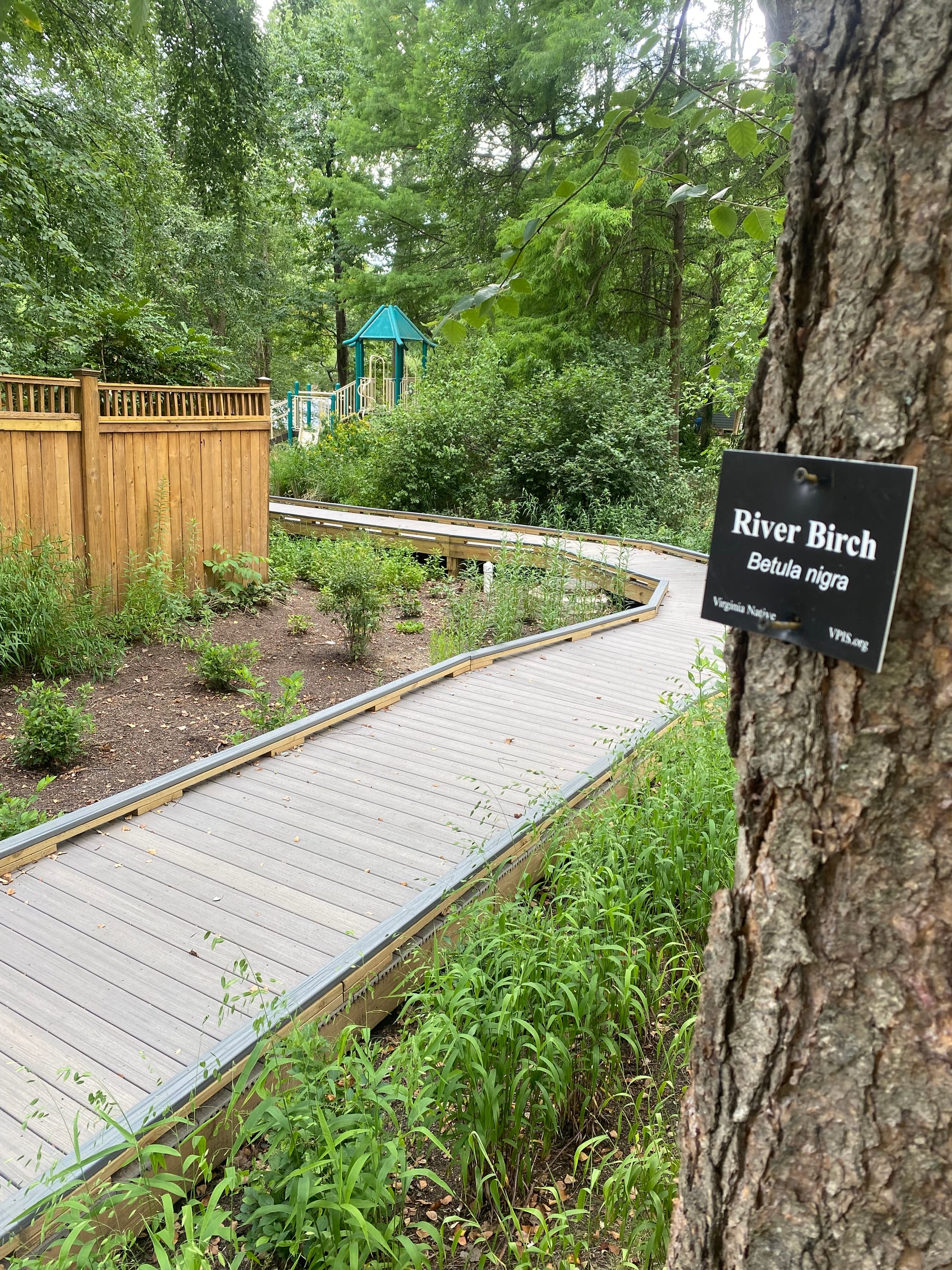
FCI: And of course the trees provide a canopy to bring cooler temperatures, given climate change.
PS: Yes.
FCI: Do you guys work with the City Arborist on the tree strategy?
PS: Well, so every project that gets built – whether it’s a public or private project in the City – goes through a review across multiple departments including the City Arborist.
FCI: And how would your office fit into Berman Park’s plans?
PS: So, [the Planning Department] got the ball rolling on the crossings project. We were trying to carry forward the vision in the Comprehensive Plan. So we were involved with the ideation and securing of funds. And we started the project design and then we handed it off to Public Works (DPW) who’re completing the design and implementing the construction.
FCI: I see. So a big part of what you did was secure the funding for the big picture. So how much funding?
Funding
PS: Well, I did ask Bryan for his project sheet, and I’m not sure I’m reading this right but it... looks like there was a grant award north of a $1 million, but you’d have to ask Ryan –
FCI: But, you’re just talking about Berman Park, right?
PS: Correct.
FCI: Is there a much bigger grant for the City to connect all the parks?
PS: So those are always sort of done piecemeal. It’s done through the CIP, the annual budget and Capital Improvement Program. That’s where it gets sorted out in terms of, ‘What are the most important projects to do in the next 5 years?’
Connecting Green Spaces
FCI: So, what would you say is exciting about the idea of connecting all the green spaces and trails for Falls Church?
PS: Oh, my goodness. Well, now you’re getting into our wheelhouse. So, this idea of parks really being connected throughout the community is something that goes back to the early days of city planning in the U.S. If you’ve been to Boston, they have the Emerald Necklace. There was this idea for how you give people access to nature as part of everyday life. One of the challenges of early cities was that they paved over everything and people lost that connection to the natural world. So, now this is a return to that idea of, ‘Let’s get the natural world back into the cities.’
And so, whether it's something like a green strip of park – something like Berman Park or the W&OD Trail – or whether it’s something as simple as tree-lining a street. Like those first couple of blocks of West Broad feel really nice. They’ve got benches, they’ve got trees and so it's a much more comfortable experience than some of the other streets in the City. And so, the idea of, ‘So, where do we have parks?’ And then, ‘Where do we have great streets that people really enjoy?’ and, ‘How do we knit all these things together?’
You talked about the rain gardens just being a nice feature to have, as something people enjoy as part of their everyday life and that’s the same spirit. Is this something that people can enjoy as part of their everyday life and make the City just a nicer place to live and to be.
FCI: Right, so I imagine it also makes people healthier and even helps local businesses?
PS: Yeah, there certainly are studies out there that show that something as simple as having street trees makes it more likely that stores will be frequented. So, there is language out there about stores seeing higher sales when they’re near trees and nicer public spaces.
Micro-Mobility
FCI: And scooters and electric bikes?
PS: Obviously, there’s an uptick in the use of those and they became more available because batteries are a lot easier to produce and have a lot more charge. So things like scooters and e-bikes are making it possible for more people to get around that way. That’s certainly increasing the usability of those sorts of things.
FCI: Is that part of your vision, to be able to incorporate more micro-mobility on trails?
PS: In the Council's Two-Year Work Plan, there’s an item to revisit what are the City’s regulations around low-speed electrical, so these could include certainly things like e-bikes and e-scooters. But, also, people can take, under Virginia law, if you follow the right steps, municipalities can allow the use of golf carts on public streets. When you think of how geographically close so many things are in the City and how close things are, there are a lot of reasons that having a different vehicle might make a lot of sense.
FCI: So, it could help people with disabilities and maybe cut down on car traffic?
PS: Yes. So, it could cut down on the number of cars and then you’re cutting down on, especially, local emissions. And you’re also encouraging people to travel in a friendlier way.
It’s like a social phenomenon that when people get in their cars and close their doors, they just get a lot meaner. They honk. They swear. They give people the finger. Whereas, when everyone's sort of walking on the sidewalk or riding their bike, or if they get into a golf cart, usually they’re sort of waving or saying hello. It’s just a different, more community-oriented way of living.
FCI: Anything else you’d like to say to Falls Church?
PS: I would say, ‘There’s a lot of exciting stuff either ongoing or upcoming. And I would encourage everyone who’s interested to stay tuned in. We do provide regular information updates on the City website and, especially, the Rec and Parks Board is pretty active. They meet monthly. So, they’re a great group to follow if people are interested in the City’s parks and park design…. And thanks for getting the word out about projects in the City!
Master plans for the Berman Park Trail Improvement Project can be found here.
If you're interested in creating your own rain garden, check out the Village Preservation and Improvement Society's RainSmart Program page here.
By Christopher Jones






Member discussion